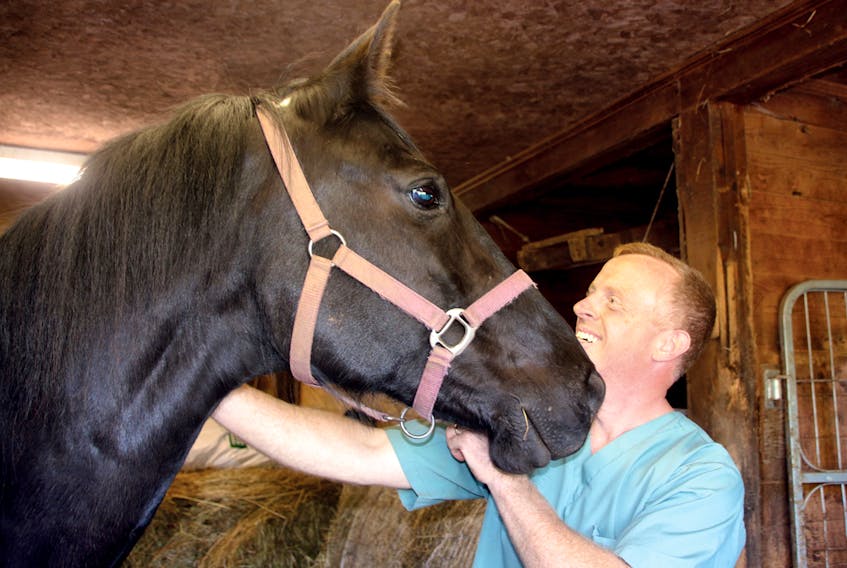TRURO, N.S. — Lyme disease isn’t the only danger carried by black-legged ticks.
Anaplasmosis is a tick-borne infection that can affect both animals and humans.
Although few Nova Scotians have been diagnosed with anaplasmosis – only one in 2018 – it has been showing up in increasing numbers of animals. A veterinary clinic in the Bridgewater area has seen several cases during the past month.
“It’s more uncommon in this part of the province, but that could change,” said Dr. Trevor Lawson, a large animal vet with Fundy Veterinarians in Murray Siding, just outside of Truro.
“The last case I dealt with was with a horse who’d come from Quebec, to the Annapolis Valley, and then to this area so I wasn’t sure if it was a native case. They can be anywhere, but there are hot spots for ticks. Cooks Brook is one of those.”
He suggests products for the prevention of attachments be used in areas where tick numbers are high, and that animals be checked daily.
“Clients are paying attention and finding ticks more. They have to be attached 24 to 48 hours to spread infection so removing them quickly is important.
“If anaplasmosis is suspected, we can run blood in-house and have an answer within a short time, and it’s relatively treatable.”
Symptoms in horses can include fever, depression, loss of appetite, swelling of limbs, stiffness, and lethargy.
Dr. Gwen Mowbray-Cashen, of Truro Veterinary Hospital, has seen an increase in the number of pets diagnosed with anaplasmosis.
“There’s no vaccine so it really is about prevention,” she said. “It’s treatable but it can be expensive.”
Dr. Troye McPherson of Central Nova Animal Hospital in Bible Hill said they’ve seen a few cases in dogs during the past year.
“Some people vaccinate for Lyme and don’t think they need a preventative, but the Lyme vaccine only works against Lyme, not anaplasmosis,” she said. “Anaplasmosis acts very similarly to Lyme, and it can appear the animal just isn’t feeling well, but the faster it’s treated the better the animal does.”
A pet may be lethargic, have joint pain and lack of appetite, but some show no symptoms. Less common symptoms include vomiting, diarrhea, coughing and laboured breathing.
“When I worked in Tantallon I saw tick-borne diseases more often,” said McPherson. “We’re getting more ticks showing up here now, and as the climate warms up we’re going to see more of these types of diseases emerge.”
Anaplasmosis is also considered an emerging disease in humans.
Symptoms, which usually occur one to two weeks after being bitten by an infected tick, include fever, chills, severe headache, muscle aches, nausea, vomiting, diarrhea, loss of appetite. People with a weakened immune system or who are elderly are more likely to develop serious illness. Blood testing is used to confirm a diagnosis and antibiotics are used in the treatment of people and animals.
“Awareness and prevention are key in protecting animals and people,” said Lawson.










